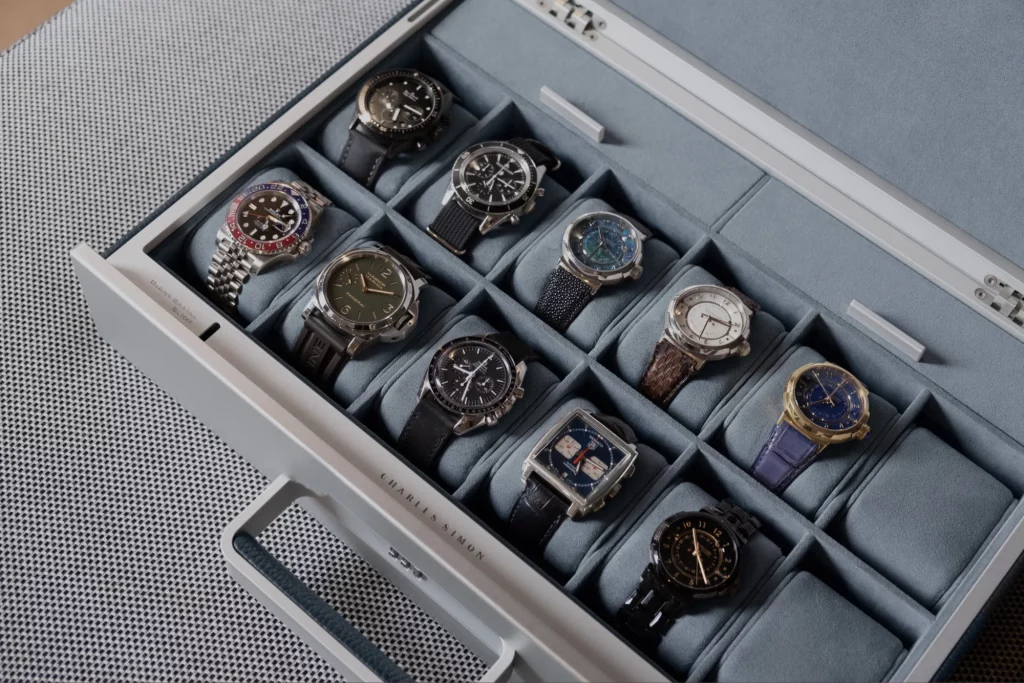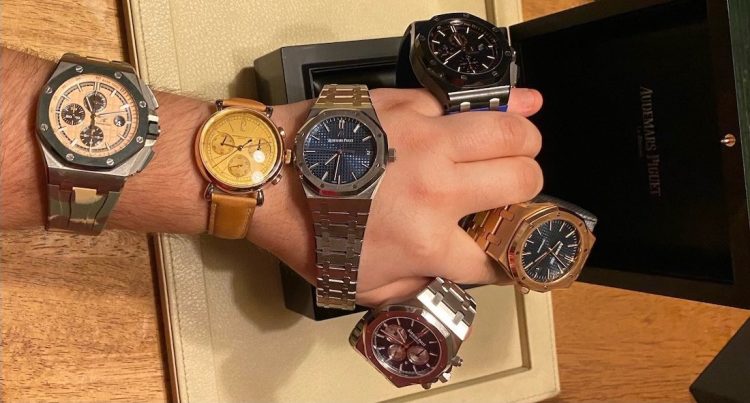In the world of luxury accessories, few items hold the same status and allure as a luxury watch. Beyond its functional role of telling time, a luxury timepiece is a symbol of prestige, a statement of personal style, and often, a significant investment. Whether it’s the intricate craftsmanship, the heritage of the brand, or the exclusive materials used in its creation, a luxury watch is far more than a mere accessory—it’s an art form.
This article will delve into the artistry and mastery behind luxury watches, uncovering the factors that make these timepieces truly unique. From the mechanical innovations to the design philosophy of the world’s most renowned watchmakers, we will explore how these stunning creations stand apart from mass-produced models and why they continue to be revered in the world of luxury collecting.
1. The Evolution of Luxury Watchmaking: A Legacy of Craftsmanship
The history of luxury watchmaking is a fascinating journey, marked by centuries of innovation, precision, and artistry. From the early pocket watches of the 16th century to today’s sophisticated smart watches and complicated timepieces, the evolution of luxury watches reflects the advancements in mechanical engineering and the growing demand for exclusivity.
1.1 The Birth of Haute Horlogerie
The term “Haute Horlogerie” refers to the highest level of watchmaking—where exceptional craftsmanship and innovation come together to create timepieces that are as much about artistry as they are about function. Early watchmakers, primarily from Switzerland, refined the art of watchmaking, perfecting mechanisms that powered these precision instruments. Over the centuries, companies like Patek Philippe, Audemars Piguet, and Vacheron Constantin have become synonymous with luxury timepieces, carrying centuries-old legacies that define the standards for craftsmanship and innovation.
1.2 Crafting a Legacy: The Importance of Heritage
The heritage of a luxury watch brand plays a crucial role in the value and prestige of its timepieces. Iconic brands often carry with them rich histories and notable innovations that shape their reputation. Collectors seek out brands with proven legacies of quality and creativity, often viewing the brand’s history as just as important as the watch itself. A Patek Philippe Grand Complication or a Rolex Submariner is not just a watch—it is a legacy piece that embodies years of expertise, innovation, and prestige.
2. The Art of Crafting a Luxury Timepiece: From Concept to Creation
The creation of a luxury watch is a multi-faceted process that involves countless hours of meticulous craftsmanship, design, and engineering. From the initial concept to the final polishing, every step is a work of art.
2.1 The Design Philosophy: Merging Form with Function
A luxury watch is a marriage of form and function. A great design is not only about visual appeal but also about how the watch feels and works on the wrist. Renowned watchmakers like Audemars Piguet and Jaeger-LeCoultre place a strong emphasis on ensuring that the design enhances the ergonomics of the watch, making it comfortable to wear for hours on end. Every detail, from the case’s shape to the dial and hands, is carefully considered to achieve perfect balance.
2.2 The Mechanical Mastery: The Movement Behind the Watch
At the heart of every luxury watch is the movement, or caliber, which powers the watch. The mechanical movement is often the most intricate and important aspect of a timepiece, and watchmakers employ complex mechanisms to ensure the highest levels of precision and reliability. The best movements are often entirely handmade, with Swiss movements being the gold standard in watchmaking.
Some of the most complicated movements in the world include tourbillons, perpetual calendars, and minute repeaters. These features, often found in limited-edition or one-of-a-kind watches, showcase the technical expertise of the watchmaker. A complicated movement not only adds value to the watch but also emphasizes its unique craftsmanship.
2.3 The Materials: How Choice of Materials Affects Uniqueness
Luxury watchmakers carefully select materials that add to the timepiece’s rarity and appeal. While traditional metals like 18k gold, platinum, and stainless steel are often used, many brands are now experimenting with more exotic materials like titanium, ceramic, and even carbon fiber.
- Precious metals: These metals add a luxurious feel and a sense of timelessness to the watch, while also contributing to its value.
- Exotic materials: Materials like carbon fiber and ceramic are not only visually striking but also make the watch more durable and lightweight.
- Gemstones: The addition of rare gemstones, such as diamonds or sapphires, can elevate the status of a timepiece, making it not just a tool for telling time, but a true luxury object.

3. Limited Editions and Exclusivity: The Value of Rarity
One of the most defining aspects of a luxury watch is its exclusivity. Many of the most desirable timepieces are released in limited editions, often with a unique design or special feature that makes them stand out from regular production models.
3.1 Why Limited Editions Matter
A limited-edition timepiece creates an air of scarcity and exclusivity, driving demand and increasing its perceived value. Often, these limited-edition watches feature special engraving, color schemes, or complicated movements that are not available in the brand’s regular collections. Collectors are often drawn to these pieces because they are not only rare but also serve as a reflection of their taste and social status.
3.2 The Role of Watch Collectors in Shaping the Market
The market for luxury watches is heavily influenced by collectors, who often set trends and determine the value of specific pieces. As these collectors seek to build their collections, they turn to auction houses, exclusive retailers, and private dealers to acquire rare and limited-edition timepieces. Some watches, especially those by brands like Rolex and Patek Philippe, have seen significant increases in value over time, thanks to the scarcity of certain models and the legacy of the brand.
4. Luxury Watches as Investments: Why They Hold Value Over Time
Beyond their beauty and craftsmanship, luxury watches have increasingly been recognized as investment pieces. The rarest and most exclusive models can appreciate significantly in value, making them a viable option for those looking to invest in tangible assets.
4.1 Watch Investment Trends
Certain models, particularly those from iconic brands like Rolex, Patek Philippe, and Audemars Piguet, have shown a remarkable ability to appreciate in value over time. Vintage watches, especially those from limited editions or historical collections, are increasingly sought after by collectors and investors. The secondary market for luxury watches has grown exponentially, with some watches fetching prices far beyond their original retail price at auction or through private sales.
4.2 The Importance of Provenance
The provenance of a watch—the history behind its ownership and its authenticity—plays a critical role in determining its value. A watch with a notable provenance, such as one owned by a famous figure or used in a significant historical event, can become a priceless collector’s item. Additionally, documentation of authenticity and maintenance records help preserve the value of a timepiece for future buyers.
5. The Future of Luxury Watches: Innovation Meets Tradition
As technology continues to evolve, so too does the art of watchmaking. While many luxury watchmakers remain committed to traditional handcrafting techniques, they also embrace innovation, experimenting with new materials and integrating modern technology into their designs. The future of luxury watches will likely see a blend of the old and new, with traditional craftsmanship meeting futuristic design concepts.
For instance, smartwatches have gained popularity, but many luxury brands are now integrating digital technology with their traditional mechanical movements, offering a blend of both worlds. The fusion of luxury and technology could redefine the way we view timepieces, creating even more opportunities for innovation and personalization in the world of watchmaking.
















































